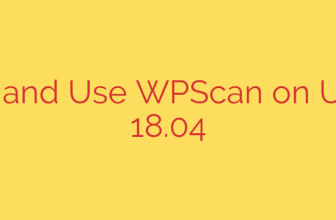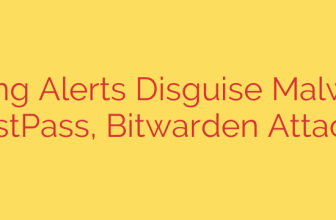
Critical PLC Vulnerability Exposes Industrial Control Systems to Attack
The silent engines of our modern world—Programmable Logic Controllers (PLCs)—are facing a significant cybersecurity threat. These rugged industrial computers are the backbone of everything from manufacturing plants and power grids to water treatment facilities and building automation. A newly identified set of vulnerabilities highlights critical weaknesses that could allow attackers to disrupt, sabotage, or take control of essential industrial processes.
Understanding this threat is the first step toward building a more resilient and secure operational environment.
What Are PLCs and Why Are They a Target?
PLCs are specialized computers that automate and manage electromechanical processes. They read inputs from sensors, execute a user-programmed logic, and control outputs like motors, valves, and switches. For decades, these systems were isolated from traditional IT networks, a concept known as the “air gap.”
However, the drive for efficiency and data-driven insights has connected these Operational Technology (OT) networks to corporate IT networks and the internet. While this convergence brings benefits, it also exposes once-isolated PLCs to a world of digital threats they were never designed to face. Attackers now have a potential pathway to the systems that control our physical world.
Unpacking the Core Vulnerability: A Lack of Authentication
The primary issue lies in the communication protocols used by many PLCs and their engineering software. A significant number of these protocols lack fundamental security features, most notably proper authentication.
This means that when an engineering workstation sends commands to a PLC—such as “start a motor,” “open a valve,” or “upload new logic”—the PLC often has no way to verify that the command came from a legitimate source.
This weakness opens the door to several dangerous attack scenarios:
- Man-in-the-Middle (MitM) Attacks: An attacker on the same network can intercept communication between the engineer and the PLC. They can alter legitimate commands or inject malicious ones without either party knowing.
- Malicious Code Injection: An attacker can directly connect to a PLC and upload a modified program. This rogue logic could cause equipment to operate outside safe parameters, leading to physical damage or production halts.
- Replay Attacks: An intruder can capture legitimate commands and “replay” them later to cause unintended actions, creating chaos within an automated process.
- Denial of Service (DoS): By flooding the PLC with commands, an attacker can overwhelm the device, causing it to crash and halt operations entirely.
The consequences of such an attack are not just digital. A successful exploit could lead to catastrophic equipment failure, environmental damage, serious safety risks for employees, and significant financial losses.
Actionable Steps to Secure Your PLC Environment
Protecting industrial control systems requires a defense-in-depth strategy that acknowledges the unique challenges of the OT environment. While patching PLCs can be difficult, implementing compensating controls is essential for mitigating risk.
Here are critical security measures every facility should implement:
Enforce Strict Network Segmentation: This is the most crucial step. Your OT network, where PLCs and other control devices operate, must be separated from your corporate IT network. Use firewalls and demilitarized zones (DMZs) to strictly control any and all traffic that flows between them. If attackers can’t reach the PLC, they can’t exploit it.
Implement Strong Access Control: Limit who can access the OT network and what they can do. Use role-based access control and ensure that credentials for engineering workstations are complex and changed regularly. Disable any unnecessary ports and services on control system devices.
Utilize VPNs for Remote Access: All remote access to the OT network must be routed through a secure, encrypted Virtual Private Network (VPN) with multi-factor authentication (MFA). Direct remote access to PLCs should be strictly forbidden.
Monitor Your Network: Deploy a network monitoring solution capable of understanding industrial protocols. These tools can detect anomalous activity, such as an unauthorized device trying to communicate with a PLC, and alert security teams before damage is done.
Develop a Robust Incident Response Plan: Be prepared for the worst. Have a clear, tested plan for how to respond to a security incident in your OT environment. This plan should detail how to disconnect systems, restore operations from a known-good backup, and preserve evidence for forensic analysis.
Moving Forward: A Proactive Approach to OT Security
The vulnerabilities found in PLCs are a stark reminder that the security of our critical infrastructure cannot be an afterthought. As industrial systems become more interconnected, their attack surface will only grow.
Protecting these vital assets requires a shift in mindset—from reactive compliance to proactive defense. Securing your industrial control systems is not merely an IT problem; it is a fundamental aspect of operational resilience, business continuity, and national security. By implementing robust segmentation, access controls, and monitoring, organizations can build a formidable defense against threats targeting the physical world.
Source: https://blog.talosintelligence.com/open-plc-and-planet-vulnerabilities/








